PMC/PubMed Indexed Articles
Indexed In
- RefSeek
- Hamdard University
- EBSCO A-Z
- OCLC- WorldCat
- SWB online catalog
- Publons
- International committee of medical journals editors (ICMJE)
- Geneva Foundation for Medical Education and Research
Useful Links
Share This Page
Open Access Journals
- Agri and Aquaculture
- Biochemistry
- Bioinformatics & Systems Biology
- Business & Management
- Chemistry
- Clinical Sciences
- Engineering
- Food & Nutrition
- General Science
- Genetics & Molecular Biology
- Immunology & Microbiology
- Medical Sciences
- Neuroscience & Psychology
- Nursing & Health Care
- Pharmaceutical Sciences
Research Article - (2023) Volume 26, Issue 11
The Influence of Motivational Therapy in Dealing with Driving Anger among Adolescents in Selected Localities of Bhopal, India-A Quasi Experimental Single Group Pretest- Posttest Study
Sharat V Kondaguli*Received: 21-Oct-2023, Manuscript No. JOP-23-22673; Editor assigned: 24-Oct-2023, Pre QC No. JOP-23-22673 (PQ); Reviewed: 07-Nov-2023, QC No. JOP-23-22673; Revised: 14-Nov-2023, Manuscript No. JOP-23-22673 (R); Published: 21-Nov-2023, DOI: 10.35248/2378-5756.23.26.653
Abstract
Purpose: To find out the influence of motivational therapy in dealing with driving anger among adolescent population.
Materials and methods: The research design used for this study is Single group pretest-posttest quasi experimental design. Study was conducted in Karond and Bhanpur areas of Bhopal city, India. The duration of the data collection was four weeks. Study population were the 30 adolescents residing in Karond and Bhanpur areas of Bhopal city, India. Sampling technique used was purposive sampling technique. Consent, Ethical clearance was obtained before proceeding for the study.
Results: Upon conducting a comparative analysis of the mean pre-test and post-test levels of driving anger within the experimental cohort, a noteworthy observation emerged. Specifically, a substantial mean discrepancy of 21.79 units was discerned between the pre-test and post-test measurements, coupled with a t-value of 18.08. This compellingly indicates the presence of a significant disparity in driving anger levels prior to and subsequent to the implementation of motivational therapy.
Conclusion: The imperative to develop anger reduction therapies and techniques is underscored by their potential to ameliorate road rage-related issues and foster the overall well-being of humanity. In the realm of road rage reduction, it is prudent to explore techniques that promote safe and efficacious means of anger management. The individuals participating in this study exhibited diverse underlying causes for their aggressive driving tendencies, often lacking an avenue to address these issues openly. While they harboured intentions to desist from such behavior, the absence of a supportive framework hindered their progress. The present study Illuminates with light on the significance of sustained, authentic, and resolute endeavors aimed at addressing road rage among adolescents, utilizing a structured motivational therapy approach. The outcomes of the study elucidated that the participants grappled with varying degrees of driving-induced anger. Notably, the introduction of structured motivational therapy yielded a discernible reduction in their levels of driving anger, a change substantiated through statistical analysis.
Keywords
Driving anger; Adolescents; Motivational therapy; Road rage
Introduction
“Rage of the body is detrimental to Dignity. Rage of the mind is detrimental to the Wisdom! The conflagration in your house unless it burns your house, doesn’t burn your neighbour’s..!” By Shri Basavanna (Indian Social reformer, philosopher, founder prophet of Lingayatism.)
Driving anger or aggressive driving behavior is characterized as deliberate actions that escalate the risk of collisions and are motivated by impatience, irritation, hostility, or a desire to save time. The term “road rage” emerged in the 1980s through media discourse and gained widespread popularity. It refers to hostile behaviors directed at other road users. Britt and Garrity (2003) defined road rage as varying degrees of driving-related anger triggered by situations provoking aggression [1]. Within the realm of traffic, one of the gravest forms of violence is observed ubiquitously and among diverse individuals, thus becoming a norm. Road rage exemplifies this form of traffic-related violence, taking on verbal, physical, emotional, and even more severe manifestations, such as injury, harm, insults, and threats [2].
The phase of adolescence encompasses manifold maturation processes encompassing physical, physiological, emotional, social, personality, and cognitive development. In the later stages of adolescence, individuals become susceptible to various behavioral issues such as alcohol dependency, smoking, substance abuse, anger problems, aggression, and road rage [3]. Consequently, instances of road rage and road traffic accidents are frequent occurrences. While anger is a natural human emotion, its detrimental potential surfaces when it spirals out of control. Strategies for managing aggression assume a pivotal role in curbing its adverse consequences. Aggression management entails acquiring the ability to regulate emotional outbursts during provoking circumstances.
According to data from the World Health Organization (WHO, 2018), road traffic accidents surpass many diseases as a global cause of fatalities, particularly among individuals aged 5 years to 29 years. The toll of road accidents is staggering, claiming the lives of over 1.2 million people annually and permanently incapacitating 20 million. Furthermore, over 90% of traffic accidents stem from human errors like speeding, careless driving, drunk driving, and road rage. Notably, road traffic accidents are linked to heightened levels of psychological distress (Craig et al., 2016), with a metaanalysis concluding that post-traumatic stress disorder prevalence among accident survivors exceeds 20% [4].
In the United States alone, the economic toll of road traffic accidents, including medical expenses, surpassed $75 billion in 2017 (Center for Disease Control and Prevention, 2020). Based on 2015 data from the National Crime Records Bureau (NCRB), Kerala, Tamil Nadu, Madhya Pradesh, Karnataka, and Maharashtra are the five states in India with the highest number of road rage cases. Nationwide, nearly 33 individuals out of every 100,000 succumbed to road accidents, totalling 451,069 cases [5]. Remarkably, NCRB’s report reveals that 1,538 adolescents were charged under Section 279 IPC for reckless driving or road rage, with 238 of them aged 12 years to 16 years, and 8 years to under 12 years old. New Delhi alone reported 61 cases of juvenile offenders charged under this section.
As a component of anger management training, Motivational Therapy denotes a structured, educative intervention that equips individuals with skills to control driving-related anger [6]. Effective management of driving anger and road rage during adolescence can be achieved through well-structured motivational interviews or therapies, involving multiple sessions to identify triggers and provide insights into strategies for addressing aggression generally and driving anger specifically. Behavioral modification strategies and instruction in anger management have shown significant efficacy in reducing verbal and non-verbal expressions of negative anger, promoting better anger regulation and substantially decreasing occurrences of aggressive behavior.
Study objectives
• To assess the pre-test levels of driving anger among participants.
• To assess the post-test levels of driving anger among participants.
• To find out significant difference between mean pre and posttest levels of driving anger among participants.
• To find out the influence of motivational therapy in dealing with driving anger among participants.
Materials and Methods
Research design
The research design used for this study is Single group pretestposttest quasi experimental design.
Study setting: Study was conducted in Karond and Bhanpur areas of Bhopal city, India.
Duration of the study: Four weeks.
Study population: Adolescents residing in Karond and Bhanpur areas of Bhopal city, India.
Study sample: Adolescents with 18 years and 19 years of age, with designated criteria, who are willing to participate in the study, residing in Karond and Bhanpur areas of Bhopal city, India.
Sample size: 30 in experimental group.
Sampling technique: Purposive sampling technique is used.
Criteria for sample selection
Inclusion criteria: Adolescents between the age group of 18 to 19 years, both male and female, those are willing to participate in the study, who understand Hindi or English (read and speak) and are available at the time of study.
Exclusion criteria: Adolescents who are not able to understand Hindi or English [7]. Who are with alcohol, narcotic substance addiction or previous history of psychiatric illnesses, who are currently practicing anger management strategies and who are not willing to participate in the study?
Description of tools: The data collection tools consist of two sections. Section A, termed Socio Demographic Character, encompasses demographic information about the participants. This section comprises 8 items covering aspects such as age, gender, occupation, lifestyle, education, substance use, previous psychiatric history, and treatment history for aggression. Section B, the Deffenbacher Driving Anger Scale (Short Scale), incorporates a condensed and standardized version of the Deffenbacher Driving Anger Scale (DAS). This segment includes 14 questions designed to assess driving anger or aggressive driving behavior in the study’s participants. The questions address reactions to situations involving illegal driving, hostile gestures, police presence, traffic obstructions, slow driving, and discourteous behavior. Respondents are required to select one response from five available options for each question, with scores ranging from 1 to 5 [8-10]. The scoring criteria are as follows: 1. None at all, 2. A little, 3. Some, 4. Much, 5. Very much. The cumulative driving anger score is calculated by summing the scores of items 1 to 14. Higher scores indicate elevated levels of driving anger.
To determine the driving anger scores of the participants, one has to add up the numbers they wrote in response to all the 14 question statements Table 1.
| Levels of driving anger | Score |
|---|---|
| Lower anger level | 14-44 |
| Higher anger level | 45-70 |
Table 1: Shows the levels of driving anger and their respective scores.
Interpretation
14-44: The amount of driving anger is in lower level.
45-70: The amount of driving anger is in higher level.
Higher scores indicate higher anger, men average 46.9 while women average 47.2 on this measure.
Ethical clearance and informed consent: Approval from the institutional ethical committee, PCNRC, Bhopal was obtained prior to data collection and all the participants signed informed consent, also the rights of the participants have been secured [11].
Procedure
The study received ethical approval from the Institutional Ethics Committee (IEC), and administrative clearance was obtained from the Ward Officer of Bhopal Municipal Corporation, Ward No-79, to conduct the research. A total of 50 individuals who met the study criteria were randomly selected from both the Karond and Bhanpur areas [12]. Among them, 30 participants were available for the study. Prior to the study, informed consent was obtained from all participants after providing them with a detailed explanation of the research. A pre-test involving the administration of the Deffenbacher Driving Anger Scale-short form, consisting of 14 questionnaires, was conducted on the group members. The experimental group received Structured Motivational Therapy (SMT). This group was further divided into three subgroups: Group-E1, Group-E2, and Group-E3, each containing 10 participants, categorized based on their residential proximity [13]. Over a span of four weeks, four separate SMT sessions of 30 minutes each were administered to the experimental subgroups. Each subgroup had one session per week. In instances where a group member missed their weekly session, an individual makeup session was arranged for them on the subsequent day, accommodating their convenience. The objective was to ensure regular attendance without any gaps. Following the completion of the interventional SMT sessions for the experimental group, a post-test involving the Deffenbacher Driving Anger Scaleshort form was administered to all 30 participants. This post-test aimed to reassess the level of driving anger, and the resulting data were subjected to analysis [14].
Statistical analysis
In this study the collected data was organized, tabulated and analysed by both descriptive statistics i.e. percentage, frequency, mean, median, mode and standard deviation and inferential statistics i.e. Chi square test.
Descriptive statistics: Demographic variables in categories were given in frequencies with their percentages. Mean, median, mode and standard deviation to assess the levels of driving anger in both pre and post-tests.
Inferential statistics: Levels of driving anger, the difference between pre-test and post-test was calculated by using paired ‘t’ test. Effectiveness and generalization of the research study was given in percentage with 95% CI and mean difference with 95% CI. Simple bar diagram, multiple bar diagram, scatter diagram with regression estimate were used to represent data [15,16]. A p-value of ≤ 0.05 was considered statistically significant and two tailed tests were used for significance testing.
Results
The main aim of the study was to find out the influence of motivational therapy in dealing with driving anger among the participants. The complete result is explained under the following sections.
Section-A
The demographic profile of the study participants was diverse with the following attributes (Table 2).
| S.No | Demographic variable | Experimental (n=30) | ||
|---|---|---|---|---|
| N | % | |||
| 1 | Age | 18 Years | 14 | 46.67 |
| 19 Years | 16 | 53.33 | ||
| 2 | Gender | Male | 22 | 73.33 |
| Female | 8 | 26.67 | ||
| 3 | Occupation | Delivery boy | 2 | 6.67 |
| Driver | 4 | 13.33 | ||
| Student | 14 | 46.67 | ||
| Factory worker | 4 | 13.33 | ||
| Others | 6 | 20 | ||
| 4 | Education | Educated | 30 | 100 |
| Uneducated | 0 | 0 | ||
| 5 | Life style | Sedentary | 4 | 13.33 |
| Active | 26 | 86.67 | ||
| 6 | Substance use | Yes | 0 | 0 |
| No | 30 | 100 | ||
| 7 | Previous psychiatric history | Yes | 0 | 0 |
| No | 30 | 100 | ||
| 8 | Present treatment | Yes | 0 | 0 |
| No | 30 | 100 | ||
Table 2: Shows the demographic information of the adolescents who participated in this study.
Age distribution: Out of 30 participants, 14 (46.67%) adolescents were 18 years of age and 16(53.33%) were 19 years of age (Figure 1) [17-20].
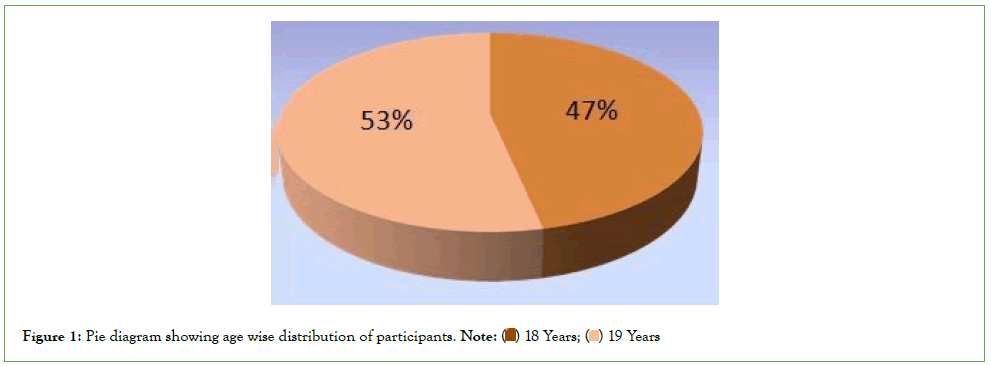
Figure 1: Pie diagram showing age wise distribution of participants. 
Gender distribution: Among participants 22 (73.33%) were males and 8 (26.67%) were females (Figure 2).
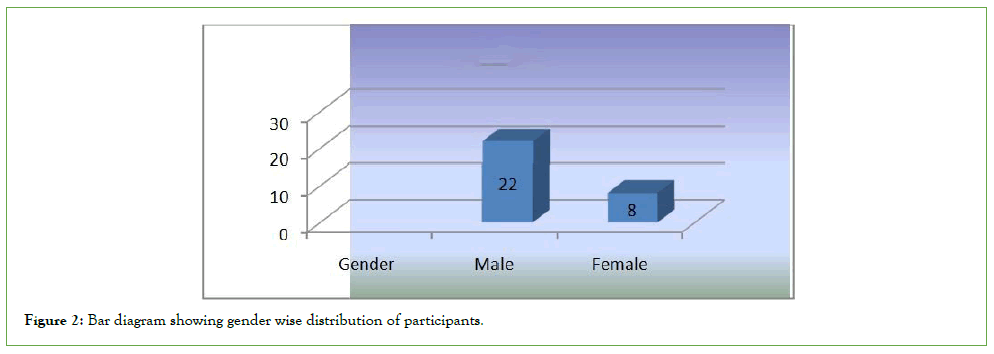
Figure 2: Bar diagram showing gender wise distribution of participants.
Occupation distribution: Among participants 2 (6.67%) were delivery boys, 4 (13.33%) were drivers, 14 (46.67%) were students, 4 (13.33%) were factory workers and 6 (20%) were of other occupations like shop keeper, tailor, carpenter, waiter and butcher (Figure 3).
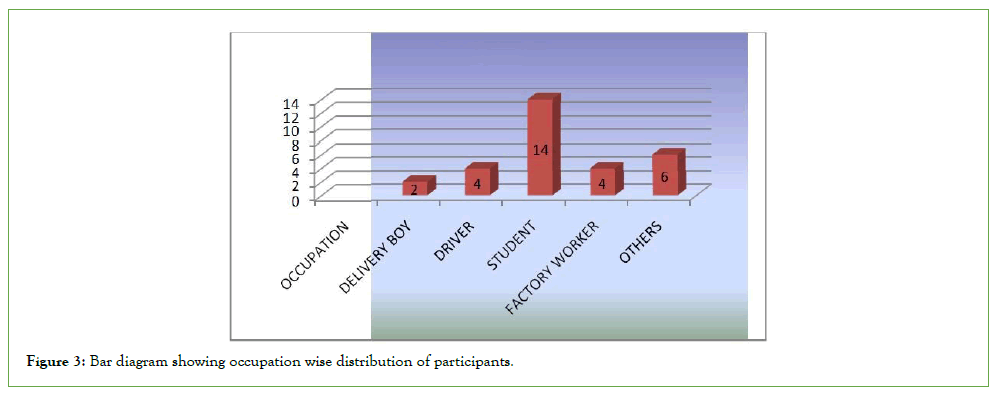
Figure 3: Bar diagram showing occupation wise distribution of participants.
Education distribution: All the participants were educated, none was an un-educated. (Inclusion criteria of the study mentioned that, this study is conducted only among the educated adolescents those who can read and write).
Life-style distribution: Among participants 4 (13.33%) were leading sedentary life-style and 26 (86.67%) were leading active life-style (Figure 4). None among experimental group and control group stated of using any substance, having any previous psychiatric illness and undergoing any treatment for aggression [21].
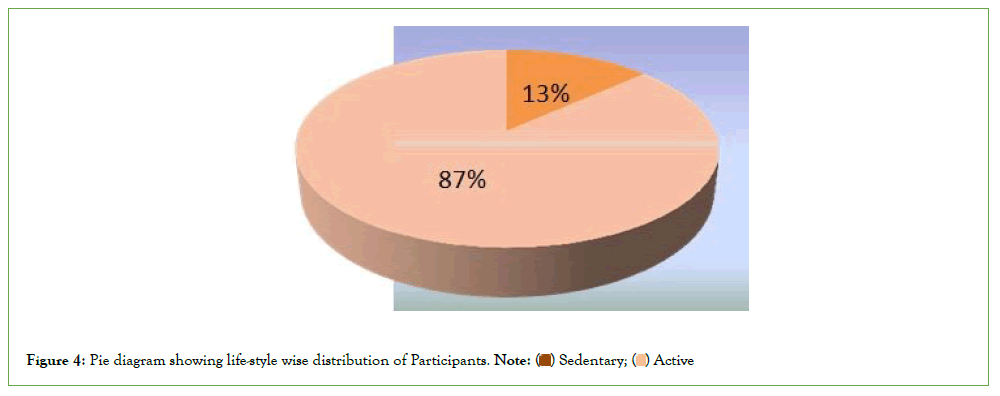
Figure 4: Pie diagram showing life-style wise distribution of Participants. 
Section-B: Deals with Pre-test and Post-test levels of driving anger among the participants (Tables 3 and 4).
| Q.No | Question statement | Pre-test | Post-test | ||||||||
|---|---|---|---|---|---|---|---|---|---|---|---|
| None at all | A little | Some | Much | Very much | None at all | A little | Some | Much | Very much | ||
| 1 | 2 | 3 | 4 | 5 | 1 | 2 | 3 | 4 | 5 | ||
| 1 | Someone is weaving in and out of traffic. | 4 | 8 | 7 | 9 | 2 | 8 | 9 | 9 | 3 | 1 |
| 2 | A slow vehicle on a mountain road will | 2 | 9 | 6 | 6 | 7 | 4 | 18 | 8 | 0 | 0 |
| 3 | Someone back right out in front of you | 3 | 4 | 4 | 6 | 13 | 8 | 13 | 9 | 0 | 0 |
| 4 | Someone runs a red light or stop sign. | 5 | 4 | 8 | 7 | 6 | 10 | 17 | 3 | 0 | 0 |
| 5 | You pass a radar speed trap. | 1 | 2 | 7 | 10 | 10 | 7 | 15 | 8 | 0 | 0 |
| 6 | Someone speeds up when you try to pass him/her. | 1 | 2 | 5 | 12 | 10 | 6 | 19 | 6 | 1 | 0 |
| 7 | Someone is slow in parking and is | 0 | 1 | 10 | 9 | 10 | 5 | 18 | 7 | 0 | 0 |
| 8 | You are stuck in a traffic jam. | 1 | 1 | 5 | 12 | 11 | 4 | 14 | 11 | 1 | 0 |
| 9 | Someone make an obscene gesture toward you about your driving. | 1 | 1 | 10 | 13 | 5 | 4 | 20 | 6 | 0 | 0 |
| 10 | Someone honks at you about your | 1 | 3 | 5 | 12 | 9 | 3 | 19 | 6 | 1 | 1 |
| 11 | A bicyclist is riding in the middle of the | 1 | 3 | 5 | 14 | 7 | 5 | 13 | 12 | 0 | 0 |
| 12 | A police officer pulls you over. | 3 | 1 | 7 | 9 | 10 | 7 | 11 | 12 | 0 | 0 |
| 13 | A truck kick up sand or gravel on the car | 0 | 2 | 9 | 11 | 8 | 4 | 14 | 12 | 0 | 0 |
| 14 | You are driving behind a large truck and | 1 | 1 | 9 | 10 | 9 | 6 | 10 | 11 | 3 | 0 |
Table 3: Shows each question wise pre and post-test levels of driving anger among the participants.
| Q.No | Question statement | Pre-test | Post-test | ||||||
|---|---|---|---|---|---|---|---|---|---|
| Driving anger score | Driving anger score | ||||||||
| Maximum Score | Mean | SD | % of Mean score | Maximum score | Mean | SD | % of Mean score | ||
| 1 | Someone is weaving in and out of traffic. | 5 | 2.9 | 1.2 | 58% | 5 | 1.8 | 0.7 | 36% |
| 2 | A slow vehicle on a mountain road will not pull over and let people by. | 5 | 3.2 | 1.3 | 64% | 5 | 2.1 | 0.6 | 42% |
| 3 | Someone back right out in front of you without looking. | 5 | 3.8 | 1.4 | 76% | 5 | 2.1 | 0.7 | 42% |
| 4 | Someone runs a red light or stop sign. | 5 | 3.2 | 1.3 | 64% | 5 | 1.8 | 0.6 | 36% |
| 5 | You pass a radar speed trap. | 5 | 3.8 | 1 | 76% | 5 | 2 | 0.7 | 40% |
Table 4: Depicts each question wise pre and post-test mean, standard deviation and mean percentage of driving anger among participants.
Section-C: Comparison of Pre and post-test levels of driving anger among participants (Table 5).
| Levels of driving anger | Pre-test | Post-test | ||
|---|---|---|---|---|
| No. of adolescents | % | No. of adolescents | % | |
| Lower Anger | 4 | 13.33 | 30 | 100 |
| Higher Anger | 26 | 86.67 | 0 | 0 |
Table 5: Indicates the pre and post-test driving anger among the participants.
Section-D: Deals with comparison of mean Pre-test and Post-test levels of driving anger (Figure 5 and Table 6).
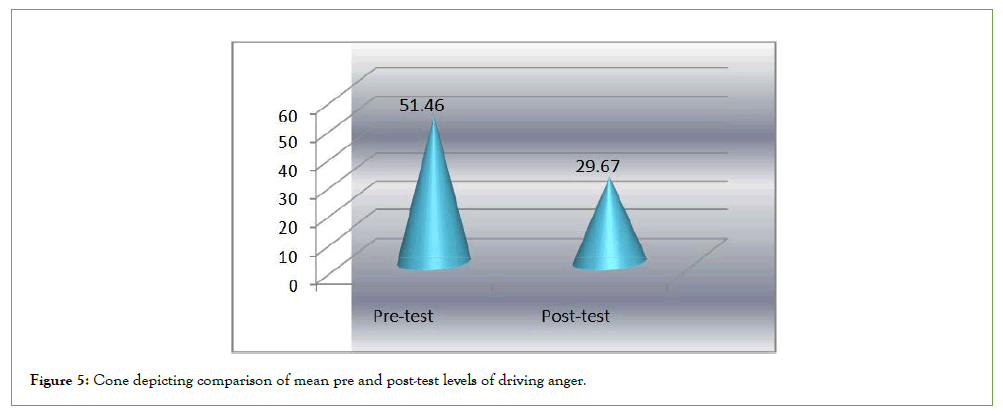
Figure 5: Cone depicting comparison of mean pre and post-test levels of driving anger.
| Score | n | Mean(M) | Standard deviation (SD) | Mean difference | t-Value | Two-Tail d (df=29, œ=0.05) | |
|---|---|---|---|---|---|---|---|
| Critical Value(CV) | p-value | ||||||
| Pre-test | 70 | 51.46 | 6.52 | 21.79 | 18.08 | 2.04 | 0.05 |
| Post-test | 70 | 29.67 | 5.96 | ||||
Table 6: Indicates the comparison of mean pre and posttest levels of driving anger.
Section-E: The influence of motivational therapy in dealing with driving anger among the participants (Table 7) [22-25].
| Group | Test | Max score | Mean score | Mean difference of reduction in driving | Percentage of reduction in driving anger level |
|---|---|---|---|---|---|
| anger level with 95% Confidence interval | with 95% Confidence interval | ||||
| Experimental | Pre-test | 70 | 51.46 | 21.79 (20.26-23.32) | 31.13 (28.94-33.32) |
| Post-test | 70 | 29.67 | |||
| Post-test | 70 | 48.9 |
Table 7: Depicts mean differences in pre and post test scores of driving anger among participants.
Discussion
After the comparison of mean pre-test and post-test levels of driving anger among participants in experimental group it’s found that there is a mean difference of 21.79% between pre-test and post- test with t-value of 18.08, which is evident that there is a significant difference in the levels of driving anger before and after the introduction of motivational therapy. The study findings revealed during pre-test that the participants responded of having more driving anger when they are stuck in traffic jam with mean percentage score of 82%. Also the participants in experimental group responded of having less driving anger with mean percentage of 58%. If someone is weaving in and out of traffic, the pre-test levels of driving anger among participants were 13.33% of lower anger level and 86.67% of higher anger level [26-29]. During post-test the participants responded of having more driving anger when they are stuck in traffic jam with mean percentage score of 48% which is a drastic reduction in driving anger from mean percentage score of 82% after the introduction of structured motivational therapy, everyone from higher anger level moved to lower anger level [30,31].
Conclusion
Comprehensive comprehension of aggressive driving and the implementation of strategies to mitigate these phenomena are of paramount importance given their universal relevance. The imperative to develop anger reduction therapies and techniques is underscored by their potential to ameliorate road rage-related issues and foster the overall well-being of humanity. In the realm of road rage reduction, it is prudent to explore techniques that promote safe and efficacious means of anger management. The individuals participating in this study exhibited diverse underlying causes for their aggressive driving tendencies, often lacking an avenue to address these issues openly. While they harboured intentions to desist from such behavior, the absence of a supportive framework hindered their progress. The present study shines a light on the significance of sustained, authentic, and resolute endeavors aimed at addressing road rage among adolescents, utilizing a structured motivational therapy approach. The outcomes of the study elucidated that the participants grappled with varying degrees of driving-induced anger. Notably, the introduction of structured motivational therapy yielded a discernible reduction in their levels of driving anger, a change substantiated through statistical analysis. Thus, structured motivational therapy emerges as a dependable modality for tackling aggressive driving tendencies. Remarkably, the participants who were exposed to motivational therapy experienced an average decrease of 31.13% in their driving anger levels, representing a statistically significant mean difference of 21.79%. This statistically validated shift underscores the potency of structured motivational therapy in ameliorating aggressive driving tendencies.
References
- Conger RD, Neppl T, Kim KJ, Scaramella L. Angry and aggressive behavior across three generations: A prospective, longitudinal study of parents and children. J Abnorm Child Psychol. 2003;31:143-160.
- Greydanus DE, Pratt HD, Greydanus SE, Hoffman AD. Corporal punishment in schools: A position paper of the Society for Adolescent Medicine. J Adolesc Health. 1992.
- Ferris CF. Serotonin diminishes aggression by suppressing the activity of the vasopressin system.
- Tremblay RE, Nagin DS, Seguin JR, Zoccolillo M, Zelazo PD, Boivin M, et al. Physical aggression during early childhood: Trajectories and predictors. Pediatrics. 2004;114(1):e43-e50.
- Achenbach TM. The child behavior checklist and related instruments. 1999.
- Liu J. Concept analysis: Aggression. Issues in mental health nursing. 2004;25(7):693-714.
- Lopez VA, Emmer ET. Influences of beliefs and values on male adolescents' decision to commit violent offenses. Psychol Men Masc. 2002;3(1):28.
- Deffenbacher JL, Deffenbacher DM, Lynch RS, Richards TL. Anger, aggression, and risky behavior: A comparison of high and low anger drivers. Behav Res Ther. 2003;41(6):701-718.
- Shinar D. Aggressive driving: the contribution of the drivers and the situation. Transp Res Part F Traffic Psychol Behav. 1998;1(2):137-160.
- Britt TW, Garrity MJ. Attributions and personality as predictors of the road rage response.Br J Soc Psychol. 2006;45(1):127-147.
- Rathbone DB, Huckabee JC. Controlling road rage: A literature review and pilot study. 1999.
- Bjureberg J, Gross JJ. Regulating road rage. Soc Pers Psychol Compass. 2021 ;15(3):e12586.
- Bhave SY, Saini S. Anger management. SAGE Publications India; 2009.
- Williams KD, Wesselmann ED. The link between ostracism and aggression. The Psychol of Soc Confl and Aggress. 2011:37-51.
- Reis-Dennis S. Anger: Scary good. Australas J Philos. 2018.
- Rogers MR, Lott B, editors. helping nonmainstream families achieve equity within the context of school-based consulting: A special double issue of the journal of educational and psychological consultation. Routledge; 2013.
- Rosen HE, Bari I, Paichadze N, Peden M, Khayesi M, Monclús J, et al. Global road safety 2010–18: An analysis of global status reports. Injury. 2022.
- Neighbors C, Vietor NA, Knee CR. A motivational model of driving anger and aggression. Pers Soc Psychol Bull. 2002; 28(3):324-335.
- Lewin I. Driver training: A perceptual-motor skill approach. Ergonomics. 1982; 25(10):917-924.
- Craig A, Tran Y, Guest R, Gopinath B, Jagnoor J, Bryant RA, et al. Psychological impact of injuries sustained in motor vehicle crashes: Systematic review and meta-analysis. BMJ open. 2016;6(9):e011993.
- Lin W, Gong L, Xia M, Dai W. Prevalence of posttraumatic stress disorder among road traffic accident survivors: A PRISMA-compliant meta-analysis. Medicine. 2018 ; 97(3).
- Centers for Disease Control and Prevention, National Center for Injury Prevention and Control (2020,7 26).
- Petridou E, Moustaki M. Human factors in the causation of road traffic crashes. Eur J Epidemiol. 2000; 16:819-826.
- Goodwin NL, Nilsson SR, Golden SA. Rage against the machine: Advancing the study of aggression ethology via machine learning. Psychopharmacology. 2020; 237:2569-2588.
- Wickens CM, Mann RE, Ialomiteanu AR, Stoduto G. Do driver anger and aggression contribute to the odds of a crash? A population-level analysis. Transp Res Part F Traffic Psychol Behav. 2016; 42:389-399.
- Sârbescu P, Stanojević P, Jovanović D. A cross-cultural analysis of aggressive driving: Evidence from Serbia and Romania. Transp Res Part F Traffic Psychol Behav. 2014; 24:210-217.
- Shinar D, Compton R. Aggressive driving: An observational study of driver, vehicle, and situational variables. Accid Anal Prev. 2004; 36(3):429-437.
- Zhang T, Chan AH. The association between driving anger and driving outcomes: A meta-analysis of evidence from the past twenty years. Accid Anal Prev. 2016; 90:50-62.
- Tillmann WA, Hobbs GE. The accident-prone automobile driver: A study of the psychiatric and social background. Am J Psychiatry. 1949;106(5):321-331.
- Kondaguli SV, Peter J, Lendhe MS. An Experimental study to assess the effectiveness of structured motivational therapy on aggression management combating road rage among the late adolescents of selected areas in Bhopal (MP). Int j health sci res. 2023.
- Liehr P, Smith MJ. Middle range theory: Spinning research and practice to create knowledge for the new millennium. Adv Nurs Sci. 1999;21(4):81-91.
Citation: Kondaguli SV (2023) The Influence of Motivational Therapy in Dealing with Driving Anger among Adolescents in Selected Localities of Bhopal, India-A Quasi Experimental Single Group Pretest- Posttest Study. J Psychia. 26:622.
Copyright: copy&; 2023 Kondaguli SV. This is an open-access article distributed under the terms of the Creative Commons Attribution License, which permits unrestricted use, distribution, and reproduction in any medium, provided the original author and source are credited.

